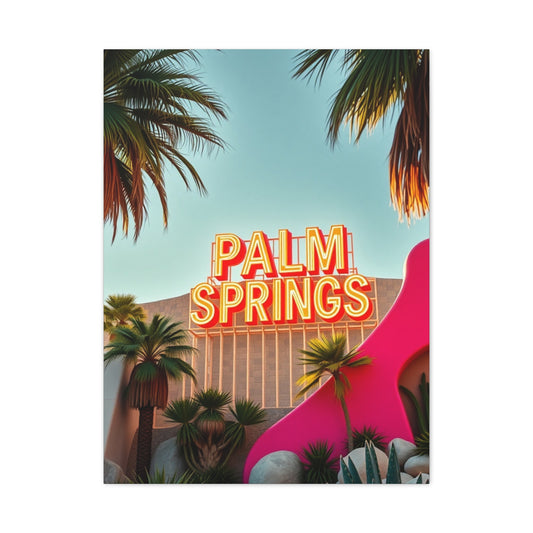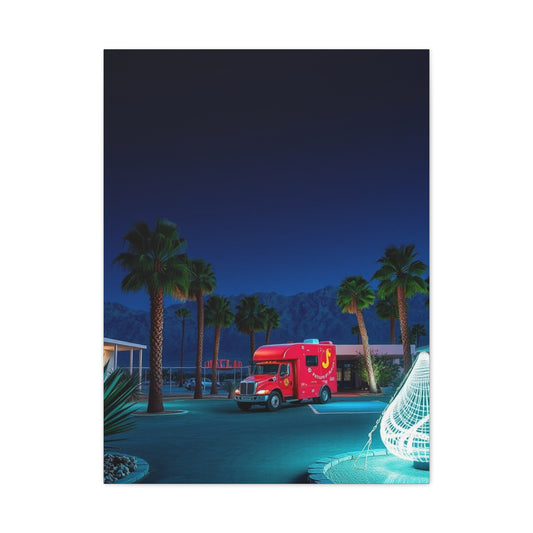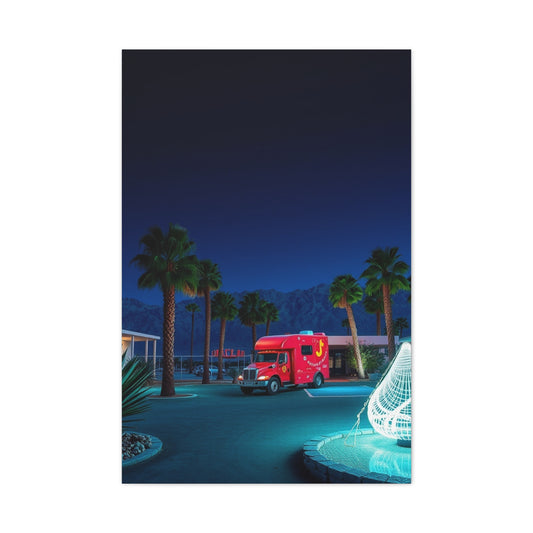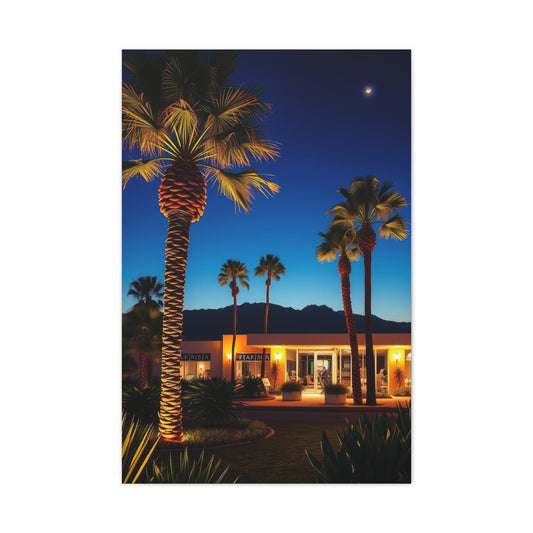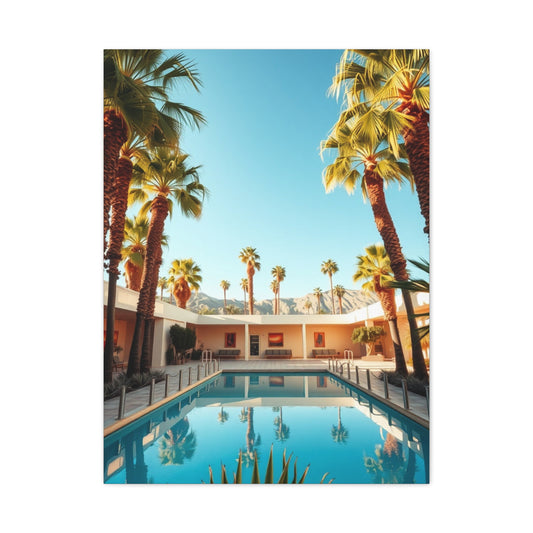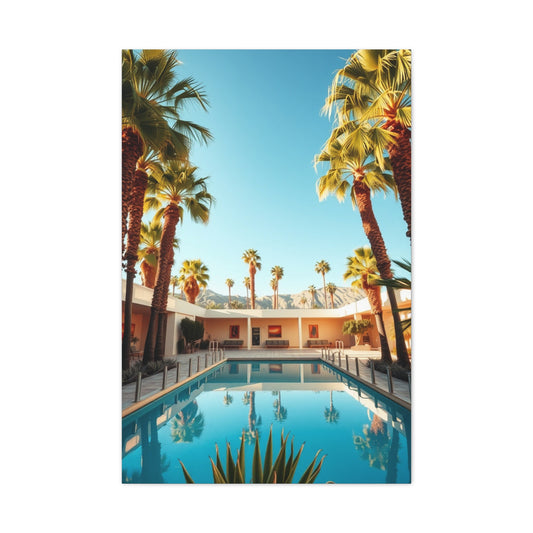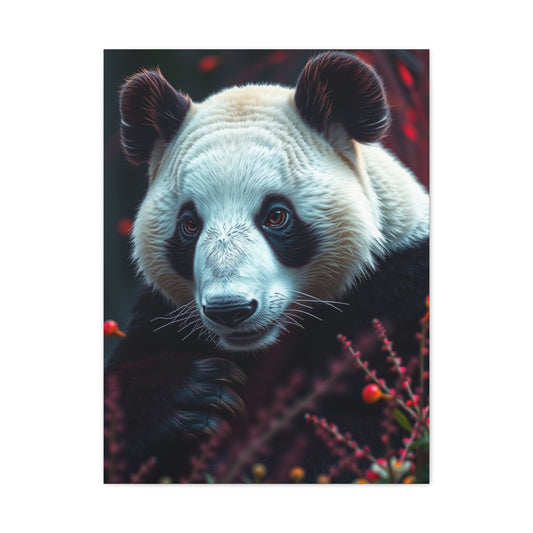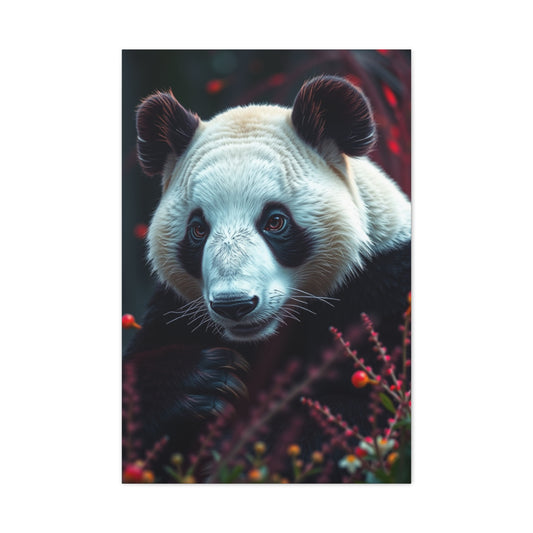Getting into full-frame photography doesn’t require a massive investment anymore. While full-frame cameras were once exclusive to high-end professionals with premium budgets, the 2025 market offers a wide range of affordable options that provide pro-level image quality and advanced features. Whether you're moving up from an APS-C system or starting with a high-performance tool, these cameras offer a great balance of performance and price.
Our top recommendation is the Nikon Z5, a mirrorless model that packs advanced functionality, excellent image quality, and smart design into a highly affordable package. But the list doesn’t end there. Each camera here has its strengths, giving you excellent full-frame power no matter your budget or creative needs.
Top Three Value Picks for Full-Frame Photography
Nikon Z5 – Great image stabilization, 4K video, weather sealing, and dual card slots
Canon EOS RP – Compact and intuitive with strong stills performance and handy touchscreen
Sony a7 II – Classic Sony quality with in-body stabilization and access to a wide lens range
Why Full-Frame Still Reigns Supreme
Full-frame sensors are equivalent in size to 35mm film. They offer more surface area, which means they can collect more light, render greater dynamic range, and produce sharper detail with lower noise in low-light conditions. These sensors typically allow better depth of field control, essential for portraiture, landscapes, and professional video work. While APS-C and Micro Four Thirds cameras are also capable tools, full-frame sensors consistently deliver cleaner, more flexible image files. Once considered a luxury, full-frame cameras are now more accessible thanks to competitive pricing, discontinued models, and increasing mirrorless innovations.
Nikon Z5 – A Balanced Mirrorless Powerhouse
The Nikon Z5 represents an exceptional balance of affordability, functionality, and image quality for photographers and videographers seeking to step into full-frame territory. Released as an entry-level model in Nikon’s growing Z-series mirrorless lineup, the Z5 provides more than just a starting point—it is a complete creative tool that caters to a wide range of users, from passionate hobbyists to seasoned visual storytellers on a budget.
Full-Frame Sensor Performance
Its 24.3-megapixel full-frame CMOS sensor is designed to maximize dynamic range and low-light performance. The sensor delivers rich tonality, subtle color gradients, and precise detail across various lighting conditions, making it suitable for everything from natural light portraits to dramatic nighttime landscapes. Whether you're shooting RAW files for professional post-production or relying on straight-out-of-camera JPEGs, the image quality remains consistently clean and vivid.
In-Body Image Stabilization
One of the Z5’s most noteworthy features is its 5-axis in-body image stabilization system, which compensates for camera shake across five directions—pitch, yaw, roll, and horizontal and vertical shift. This feature allows photographers to shoot at slower shutter speeds without compromising sharpness, opening creative doors for handheld low-light shooting, motion blur experimentation, and natural-light indoor photography. For videographers, this stabilization translates into smoother footage, reducing the need for gimbals or stabilizing rigs in casual filming setups.
Autofocus with Eye Detection
The autofocus system in the Nikon Z5 is equally commendable, offering 273 detection points that cover almost the entire frame. It incorporates advanced eye-detection autofocus, which is especially effective for portraits, lifestyle photography, and documentary work. Eye-tracking stays locked on subjects with surprising tenacity, even in scenes with cluttered backgrounds or erratic motion. This ensures your subject remains tack-sharp, making it easier to work with wide apertures and shallow depth-of-field compositions.
Video Capabilities for Creators
Videographers will find the Z5 particularly attractive for its video capabilities, including 4K UHD recording at 30 frames per second. While there is a crop factor when shooting in 4K, the image output remains highly usable with excellent color science and strong contrast reproduction. Full HD recording is also available at 60 fps, ideal for smooth playback or slow-motion effects. In addition, a clean HDMI output allows for the use of external monitors and recorders, which is useful for more professional workflows.
Build Quality and Durability
The camera's build quality reflects Nikon’s legacy of durable design. Constructed from a magnesium-alloy chassis, the body feels solid and confidence-inspiring without being bulky or cumbersome. It is weather sealed to protect against moisture and dust, making it suitable for outdoor photography in changing conditions. This durability is a crucial feature for travel photographers, nature explorers, and content creators who need equipment that can endure unpredictable environments.
User Experience and Controls
Ergonomically, the Nikon Z5 has a well-balanced, thoughtfully sculpted design. The grip is deep and secure, providing comfort for long shooting sessions, and the control layout is intuitive for users familiar with Nikon’s DSLR systems. For new users, the interface is easy to learn and logically arranged, allowing faster mastery of manual controls and creative exposure techniques. A responsive vari-angle touchscreen LCD adds further versatility, enabling low-angle and high-angle shooting without strain.
Dual Card Slots and Storage Management
In terms of file handling and storage, the Z5 features dual UHS-II compatible SD card slots. This is a critical feature for professionals and advanced enthusiasts who require backup redundancy or want to separate stills and video footage. Many cameras in this price range cut corners by offering only a single card slot, so Nikon’s decision to include two elevates the Z5’s practicality in professional use cases such as event photography and wedding shoots.
High-Resolution Viewfinder
The electronic viewfinder on the Z5 is another area where Nikon has not compromised. With a high-resolution 3.6 million-dot OLED display, it provides a crystal-clear preview of exposure, white balance, and focus before you even take the shot. This real-time preview empowers photographers to make informed decisions in the moment, reducing post-processing time and increasing confidence in their compositions.
Creative Features and Tools
Additional creative features built into the Nikon Z5 include multiple exposure modes, focus shift shooting for macro photography, in-camera time-lapse creation, and a broad selection of picture control presets for immediate stylistic adjustments. These functions provide ample room for experimentation, artistic expression, and multimedia storytelling.
Battery Life and Charging Flexibility
Battery life, often a concern for mirrorless users, is handled well by the Z5’s EN-EL15c battery. It supports USB-C in-camera charging and power delivery, a convenient option for long shoots or travel scenarios where wall outlets are unavailable. While the battery life isn’t groundbreaking, the ability to charge on the go with power banks adds an essential layer of practicality for fieldwork and remote shooting.
Connectivity and Sharing
Connectivity options are also comprehensive. Built-in Wi-Fi and Bluetooth make it easy to transfer files to mobile devices using Nikon’s SnapBridge app. This feature is particularly helpful for social media managers, journalists, and travel bloggers who need to share content in real time. Additionally, remote camera control via smartphone allows for discreet shooting or group photos without needing to touch the camera.
Lens Compatibility and System Expansion
Lens compatibility is excellent as well. The Nikon Z5 uses the Z-mount system, which offers access to an expanding lineup of high-quality NIKKOR Z lenses. These lenses are known for their edge-to-edge sharpness, fast apertures, and silent autofocus motors. With the FTZ adapter, the Z5 is also compatible with Nikon’s extensive library of F-mount DSLR lenses, making it an excellent choice for photographers with existing Nikon gear looking to transition into mirrorless.
Beginner-Friendly Yet Advanced
For anyone new to full-frame photography or transitioning from a crop-sensor system, the Nikon Z5 offers a smooth learning curve. It performs reliably in automatic modes while encouraging creative growth through its manual exposure controls and customizable buttons. The menu system is extensive yet organized, allowing photographers to tailor the camera's behavior to suit their shooting style.
Canon EOS RP – Lightweight, Affordable, and Capable
The Canon EOS RP has earned its reputation as one of the most accessible full-frame cameras on the market, offering a remarkable mix of simplicity, image quality, and compact design. Aimed at enthusiasts, beginners, vloggers, and casual content creators, it brings Canon’s renowned imaging technology to a more affordable tier without drastically cutting corners. Released as a follow-up to the more advanced EOS R, the RP gives users a straightforward gateway into the world of full-frame mirrorless photography with the added advantage of Canon's RF lens ecosystem.
At its core, the EOS RP houses a 26.2-megapixel full-frame CMOS sensor that captures images with rich colors and pleasing tonal depth. Canon’s well-established color science is on full display here, particularly appealing to portrait photographers who want lifelike skin tones and vibrant backgrounds. While resolution isn’t the highest among its peers, the sensor is capable of delivering crisp detail and solid dynamic range. The camera also handles contrasty lighting situations reasonably well, preserving information in both shadows and highlights when exposed properly.
The RP is especially attractive to those stepping up from APS-C sensors or compact systems due to its approachable learning curve and DSLR-like ergonomics in a smaller, mirrorless body. Despite its full-frame sensor, the camera is extremely lightweight at only 485 grams including battery and memory card. This makes it one of the lightest full-frame cameras available today and an ideal option for photographers who travel frequently or want to carry minimal gear. Its physical design borrows from Canon’s DSLR heritage, with a well-placed grip and intuitive control layout that allows for one-handed shooting in most scenarios.
Canon’s Dual Pixel CMOS autofocus system is a standout feature in the RP, providing fast and accurate focusing for still images. It uses nearly 4,800 manually selectable focus points that span across a significant portion of the sensor. Eye-detection AF enhances this further, locking onto subjects with impressive precision during portrait sessions or candid shots. Although the autofocus system slows somewhat in low-light or in video mode, it remains reliable and user-friendly in the majority of standard lighting conditions. This makes the EOS RP a capable camera for family photography, street shooting, or even event coverage under moderate lighting.
In terms of video capabilities, the EOS RP is a solid, though not standout, performer. It supports 4K video recording at 24 frames per second, but with a noticeable crop factor of 1.6x. This means wide-angle lenses behave more like standard focal lengths, which could be a limitation for vloggers or documentary filmmakers. Additionally, the autofocus in 4K tends to switch from Dual Pixel to contrast-detection, resulting in slower and less smooth subject tracking. However, Full HD video at 60 fps is recorded using the full sensor width and delivers more reliable autofocus, making it the preferred mode for run-and-gun video shooting or content creation.
A major strength of the EOS RP is its vari-angle LCD touchscreen, which flips out and rotates fully. This feature is especially useful for vloggers, self-portrait photographers, or those shooting at high or low angles. The screen is responsive, bright, and supports touch focus and menu navigation, allowing for fast adjustments without relying solely on physical buttons. Combined with the camera’s small size, the screen adds to the EOS RP’s appeal as a tool for creators who need flexibility in how they compose their images and videos.
Another practical advantage of the EOS RP is its wide range of connectivity options. The built-in Wi-Fi and Bluetooth make it easy to transfer images wirelessly to a smartphone or tablet via Canon’s dedicated app. The app also allows for remote shooting, which can be handy for time-lapse photography, group portraits, or discreet wildlife shots. USB-C charging is supported, which allows you to power the camera using portable power banks—a significant convenience for travel photographers or those working long hours without access to an outlet.
Battery life is modest, rated at around 250 shots per charge using the rear screen. This is one of the camera’s more notable limitations, especially when compared to DSLRs or newer mirrorless models with more efficient power management. Carrying an extra battery or two is highly recommended if you plan to shoot for extended periods. On the plus side, the USB-C port can help keep the camera running longer during stationary shoots, such as interviews or product videos.
When it comes to image stabilization, the EOS RP lacks in-body stabilization, which is increasingly common in modern mirrorless cameras. However, many of Canon’s RF lenses include built-in optical image stabilization, which works effectively for handheld shooting and casual video work. Users who plan to shoot frequently without a tripod will benefit most from pairing the camera with one of these stabilized lenses, such as the RF 24-105mm f/4-7.1 IS STM or the RF 35mm f/1.8 IS Macro.
Sony a7 II – Reliable Classic with Image Stabilization
The Sony a7 II, despite being a slightly older model in the Alpha series, remains a dependable and feature-rich full-frame mirrorless camera. For photographers looking to step into full-frame photography without breaking the bank, this camera continues to offer excellent value. It may not boast the cutting-edge speed or video resolution of more recent releases, but the core imaging features still hold strong in 2025, making it a worthwhile consideration for both new and experienced photographers.
At the heart of the Sony a7 II is a 24.3-megapixel full-frame Exmor CMOS sensor, which provides beautiful image quality with impressive sharpness, color accuracy, and dynamic range. The sensor excels in well-lit conditions and performs admirably in low-light scenarios when paired with the right lens. High ISO handling is solid, producing clean results even as sensitivity is pushed. The larger sensor size also enables excellent subject separation and shallow depth-of-field, allowing photographers to create professional-looking bokeh for portraits, detail shots, or cinematic stills.
One of the standout features of the a7 II is its integrated 5-axis in-body image stabilization. This was a major innovation at the time of its release and still delivers tangible benefits today. The stabilization compensates for five types of camera shake, allowing users to shoot at slower shutter speeds without sacrificing sharpness. Whether capturing handheld stills or recording video on the move, this system reduces blur and produces steadier output. This makes the camera a useful tool for street, travel, and documentary photography where tripods are not always practical.
While the a7 II is not primarily a video-focused camera, it does provide full HD 1080p recording at multiple frame rates, including 60 fps for smooth motion. The video footage is clear and color-rich, suitable for casual filmmaking, social content, or behind-the-scenes coverage. The camera also offers support for professional codecs such as XAVC S and AVCHD, giving more flexibility in post-production. Though the lack of 4K video may be seen as a drawback by today's standards, the a7 II still meets the needs of many creators who prioritize high-quality stills and simple video projects.
Autofocus performance in the a7 II is powered by a hybrid system that combines 117 phase-detection points and 25 contrast-detection points. While it isn’t the fastest or most intelligent AF system on the market now, it remains fast and accurate in well-lit environments. The face-detection feature is reliable for portrait work, and focus tracking handles slow-moving subjects reasonably well. In situations that require quick reflexes, such as wildlife or sports, more advanced autofocus systems may be preferable, but for general photography, the a7 II’s system is more than capable.
The body of the a7 II is robustly built with a magnesium alloy shell, offering both strength and portability. It features weather-resistant sealing to protect against dust and moisture, allowing photographers to operate confidently in less-than-ideal conditions. The overall design feels solid in the hand, and the deep, contoured grip improves stability when using larger lenses. Weighing around 600 grams, the camera maintains a balance between durability and convenience, especially for photographers who shoot on location or travel frequently.
Canon EOS R8 – Speed, Precision, and Portability in a Refined Mirrorless Design
The Canon EOS R8 is an exceptional piece of imaging technology tailored for creators seeking a harmonious blend of speed, accuracy, and compactness. It integrates Canon’s cutting-edge imaging advancements into a featherlight full-frame mirrorless body, making it ideal for on-the-go photographers and videographers. Whether you are capturing fast-paced sports, documenting wildlife in motion, or vlogging your travel escapades, the EOS R8 delivers uncompromising performance in a highly portable package.
Exceptional Image Quality With a 24.2MP Full-Frame Sensor
At the core of the EOS R8 lies a meticulously engineered 24.2-megapixel full-frame CMOS sensor. Designed to deliver high-resolution stills with remarkable clarity, the sensor works in synergy with the powerful DIGIC X image processor to produce finely detailed images with accurate color rendition, reduced noise, and impressive dynamic range. This sensor-processor duo ensures that whether you're shooting in bright daylight or under challenging low-light conditions, your images retain richness, texture, and tonal depth. This makes it a formidable choice for professional-grade photography across genres including portraiture, landscape, fashion, and street photography.
Cutting-Edge Autofocus With Deep Learning-Based AI
Autofocus on the Canon EOS R8 is nothing short of revolutionary. Equipped with Dual Pixel CMOS AF II technology, the camera offers an intelligent and intuitive focusing experience. Covering up to 100% of the frame with 1,053 automatically selectable AF zones, this system locks onto subjects with uncanny accuracy and rapidity. What sets it apart is its deep learning-based AI that enables precise subject detection and tracking. It effortlessly identifies human eyes, faces, and bodies, and can also detect animals such as birds, dogs, and cats, as well as vehicles like cars and motorcycles.
This kind of tracking reliability is especially vital for creators capturing dynamic subjects. From action photographers to documentary filmmakers, users can trust the EOS R8 to consistently nail focus, even in erratic or unpredictable environments.
High-Speed Continuous Shooting: Freeze Every Moment
For those who work in high-intensity environments, the EOS R8 offers blistering fast continuous shooting capabilities. With the electronic shutter enabled, the camera can fire off up to 40 frames per second. This makes it a compelling tool for sports, wildlife, and event photography where fractions of a second determine the difference between a good shot and a spectacular one.
The buffer performance has been refined for efficiency, allowing you to capture burst sequences without significant slowdown. Whether capturing birds in mid-flight or the exact moment a sprinter crosses the finish line, the EOS R8 ensures you never miss the decisive moment.
Advanced Video Capabilities: Oversampled 4K at 60p
The Canon EOS R8 isn’t just a stills powerhouse—it’s a cinematic workhorse as well. It can record 4K video at 60 frames per second using oversampled 6K data from the full width of the sensor. This process ensures sharper, cleaner footage with heightened detail and minimized artifacts. There’s no crop factor, which is a massive advantage for vloggers and filmmakers who value full-frame aesthetics and wider compositions.
Additionally, the EOS R8 supports Canon Log 3 for those who want more flexibility in post-production and dynamic range. The inclusion of 10-bit 4:2:2 internal recording provides color depth suitable for professional workflows. It also offers full HD recording at up to 180 fps for stunning slow-motion sequences.
Streamlined Ergonomics and Intuitive Design
One of the standout features of the EOS R8 is its highly compact and travel-friendly form factor. Weighing just around 461 grams (including battery and card), this mirrorless body is remarkably lightweight for a full-frame system. Its ergonomic grip is sculpted for comfort, allowing extended handheld shooting sessions without fatigue. The design is intuitively laid out, with logically placed dials and customizable controls that allow quick adjustments on the fly.
The fully articulating 3.0-inch Vari-Angle touchscreen LCD provides immense flexibility. Whether you’re vlogging, capturing high-angle shots, or working at awkward angles, the screen adapts effortlessly. It’s also a major asset for one-person content creation and live streaming.
Hybrid Functionality for Photographers and Videographers
What makes the Canon EOS R8 a standout mirrorless camera in today’s crowded market is its hybrid appeal. It is built from the ground up to accommodate the needs of both photographers and videographers. This dual-purpose design ensures that you don’t need to compromise whether you are switching between shooting stills and video or integrating both into a single creative workflow.
Its USB-C, micro-HDMI, and microphone/headphone ports provide comprehensive connectivity for live streaming, monitoring, and external recording. Built-in Wi-Fi and Bluetooth make it seamless to share content wirelessly or control the camera remotely via Canon’s mobile applications.
Responsive Performance with DIGIC X Engine
The DIGIC X processor is not only responsible for image rendering and processing speed but also enhances the overall responsiveness of the system. It plays a vital role in reducing lag, boosting buffer clearing times, and powering the real-time autofocus algorithms. The processor also contributes to the EOS R8's energy efficiency, giving you more shots per charge even with its compact LP-E17 battery.
From powering real-time HDR capabilities to optimizing in-camera corrections like lens aberration and distortion, DIGIC X is the silent engine behind the EOS R8’s professional-grade output.
Versatile Lens Compatibility with RF Mount
The Canon EOS R8 uses the RF lens mount, granting access to a growing ecosystem of high-quality lenses. RF lenses are known for their optical precision, edge-to-edge sharpness, and advanced coatings that reduce ghosting and flare. Moreover, with Canon’s EF to RF adapters, legacy EF and EF-S lenses are fully compatible, offering a wealth of creative choices to those upgrading from DSLR systems.
This flexibility in lens options ensures that the EOS R8 remains a future-proof investment, allowing creators to evolve their toolkit without limitations.
Canon EOS 6D Mark II – Classic DSLR Charm with Contemporary Functionality
The Canon EOS 6D Mark II bridges the gap between tradition and innovation, offering photographers a reliable DSLR experience infused with modern enhancements. For those who appreciate the tactile feedback of physical controls, the clarity of an optical viewfinder, and a robust yet familiar body design, the 6D Mark II provides a compelling full-frame option. It’s an ideal choice for portrait photographers, travel shooters, and event specialists seeking a dependable camera that delivers consistent results without unnecessary complexity.
High-Resolution Imaging with a 26.2MP Full-Frame Sensor
At the heart of the Canon EOS 6D Mark II is a 26.2-megapixel full-frame CMOS sensor that captures exceptional detail with a pleasing tonal range. This sensor balances resolution and low-light sensitivity, making it suitable for diverse shooting environments. Whether you're photographing indoor events, outdoor landscapes, or intricate close-ups, the sensor provides images with minimal noise and excellent clarity even at higher ISO settings.
Paired with Canon’s DIGIC 7 image processor, the sensor performs efficiently across various lighting conditions. The processor enhances color accuracy, image sharpness, and dynamic range, allowing photographers to capture scenes with natural contrast and vibrant hues. This synergy makes the camera adept at everything from fine art photography to day-to-day documentation.
Reliable Autofocus with 45 Cross-Type Points
The autofocus system on the Canon EOS 6D Mark II is responsive and user-friendly, featuring 45 all cross-type AF points that improve subject tracking and focus accuracy. These cross-type sensors are particularly helpful when shooting with fast lenses or in low-contrast environments, as they deliver quicker focus lock and improved performance across the frame.
While the focus coverage is not as extensive as on some mirrorless rivals, the autofocus engine is particularly well-tuned for portraiture and event photography. Face detection in Live View and Dual Pixel CMOS AF also contribute to smoother, more intuitive focusing during video recording or when composing shots using the rear screen.
Full HD Video with Digital Stabilization
While the EOS 6D Mark II lacks 4K video recording, it compensates with Full HD 1080p capture at up to 60 frames per second, suitable for most general-purpose filmmaking and content creation needs. The footage is crisp and well-exposed, with a cinematic depth of field thanks to the full-frame sensor. Additionally, the inclusion of digital image stabilization improves handheld video recording by reducing camera shake.
For vloggers, travel documentarians, or wedding videographers working in 1080p workflows, the camera provides a versatile video solution. The video mode integrates well with Canon’s color science, known for delivering warm skin tones and pleasing contrast right out of the camera.
Vari-Angle Touchscreen for Creative Framing
A standout feature of the EOS 6D Mark II is its fully articulating 3-inch LCD touchscreen. This vari-angle display adds tremendous value for creators who need flexible framing options. Whether capturing overhead shots, low-angle perspectives, or self-recorded content, the screen offers smooth usability with a responsive touch interface.
The ability to touch to focus or navigate menus with a finger further streamlines the user experience, especially in fast-paced environments or when using a tripod. It significantly enhances Live View shooting and video recording versatility.
Rugged Build and Ergonomic Comfort
True to its DSLR lineage, the Canon EOS 6D Mark II sports a robust polycarbonate and aluminum-alloy chassis with weather resistance. This construction is ideal for outdoor use, where dust and moisture can compromise performance. Its well-contoured grip and tactile controls make it intuitive to operate for both beginners and seasoned professionals.
Despite its full-frame capabilities, the camera remains relatively lightweight for a DSLR, making it a practical choice for extended handheld use. Photographers transitioning from crop sensor bodies will find the layout familiar yet more substantial in terms of control and balance.
Connectivity Features: Wi-Fi, GPS, and Bluetooth
The EOS 6D Mark II includes a comprehensive set of wireless features that enhance productivity in the field. Built-in Wi-Fi and NFC allow for quick file transfers to smart devices, laptops, or even cloud platforms. Bluetooth connectivity ensures a constant low-energy connection for remote control and geotagging, while integrated GPS automatically embeds location data into your images.
These features are indispensable for travel photographers, field journalists, and landscape shooters who need location-based metadata or fast social sharing capabilities. Combined, they turn the camera into a more integrated and mobile-friendly creative tool.
Solid Battery Life for All-Day Shooting
Battery performance on the Canon EOS 6D Mark II is another notable strength. With the LP-E6N battery, the camera can achieve up to 1,200 shots per charge under optimal conditions using the optical viewfinder. This is a significant advantage over mirrorless systems, which tend to consume more power due to electronic viewfinders and constant sensor usage.
For those who photograph weddings, events, or long travel days without frequent access to charging, the battery efficiency offers welcome reliability. There’s also support for battery grips for extended power and vertical shooting ergonomics.
Limitations and Considerations
Despite its many strengths, the Canon EOS 6D Mark II does have a few limitations. Notably, it features only a single SD card slot, which may be a concern for professionals who prefer in-camera backups. Additionally, the lack of in-body image stabilization means users will need to rely on optically stabilized lenses or external supports when working in challenging lighting or handheld video scenarios.
That said, the camera’s overall performance, dependable image quality, and straightforward workflow still place it among the top choices for full-frame DSLR enthusiasts in 2025.
Ideal Applications and User Profiles
The Canon EOS 6D Mark II remains particularly appealing to portrait photographers, thanks to its shallow depth of field rendering and flattering skin tones. Event and wedding professionals appreciate its reliable autofocus, excellent battery endurance, and low-light performance. For travel enthusiasts, its integrated GPS, rugged design, and wireless sharing options make it a trustworthy companion across varied terrains.
Hobbyists and intermediate photographers transitioning into the full-frame ecosystem will also find it an accessible gateway without being overwhelmed by complexity or cost. Its traditional control layout and DSLR aesthetic provide an experience grounded in precision and tactile engagement.
Panasonic Lumix S5 – Superior Hybrid Camera for Video and Stills
The Panasonic Lumix S5 is a versatile tool designed for creators who want professional-level photo and video in one package. It features a 24.2 MP sensor and dual native ISO for excellent dynamic range and color depth. One standout feature is the High-Resolution Shot Mode, which creates 96 MP composite images using sensor-shift technology. The 5-axis image stabilization is highly effective, especially for handheld video. It records 4K at 60 fps and supports 10-bit internal video with V-Log, features rarely seen at this price point. Dual card slots, headphone and mic jacks, and HDMI output make it a complete video solution. Weather sealing and a compact form factor add durability and portability for outdoor use.
Pentax K-1 Mark II – Feature-Rich DSLR for Rugged Environments
The Pentax K-1 Mark II is a full-frame DSLR built for durability and high-resolution photography. Its 36.4 MP sensor captures highly detailed images, and it includes a built-in 5-axis stabilization system that works with all compatible lenses. One of its unique features is the Pixel Shift Resolution mode, which combines multiple exposures for ultra-high-definition images. The Astrotracer feature allows the camera to compensate for Earth’s rotation, making it ideal for capturing stars and long exposures. It includes weather sealing, GPS, and a fully articulating LCD screen. While video capabilities are basic and autofocus is slower than mirrorless models, it excels in landscape, night sky, and still-life photography.
Buying Advice and Frequently Asked Questions
Full-frame cameras deliver better low-light results, superior dynamic range, and more detailed files compared to smaller sensors. They're ideal for large prints, cropping in post, and shallow depth-of-field effects. While historically expensive, full-frame cameras are now more affordable thanks to mirrorless technology, increased competition, and discounted older models.
Several full-frame cameras offer solid video specs, even under $2,000. The Nikon Z5, Canon EOS R8, and Panasonic S5 support 4K recording, external audio input, and manual controls. The S5 stands out for advanced video features, making it one of the best hybrid options in its class.
Refurbished or renewed cameras can be a smart way to save, provided you buy from reputable sellers. Look for warranties and certified inspections from sources like Amazon Renewed, Adorama, or local camera stores. Always check shutter count and physical condition before finalizing a used purchase.
Conclusion: Full-Frame Power Without the Premium Price
Affordable full-frame cameras are no longer a rare find. Thanks to innovation and market shifts, photographers and videographers can now enjoy pro-level features at reasonable prices. From mirrorless hybrids like the Nikon Z5 and Panasonic S5 to rugged DSLRs like the Pentax K-1 Mark II and Canon 6D Mark II, the options in 2025 cater to all shooting styles and preferences.
If you’re searching for the best budget full-frame camera, the Nikon Z5 remains the top choice due to its stabilization, sharp autofocus, and versatile design. However, any camera in this guide can elevate your work without exceeding your budget. Whether you shoot portraits, landscapes, vlogs, or high-speed action, you’ll find a camera here that fits your creative needs without compromise.










